Micro Housing by Donghyun Kim - second-prize entry for International Architectural Thesis Award 2013
By Bustler Editors|
Friday, Nov 8, 2013
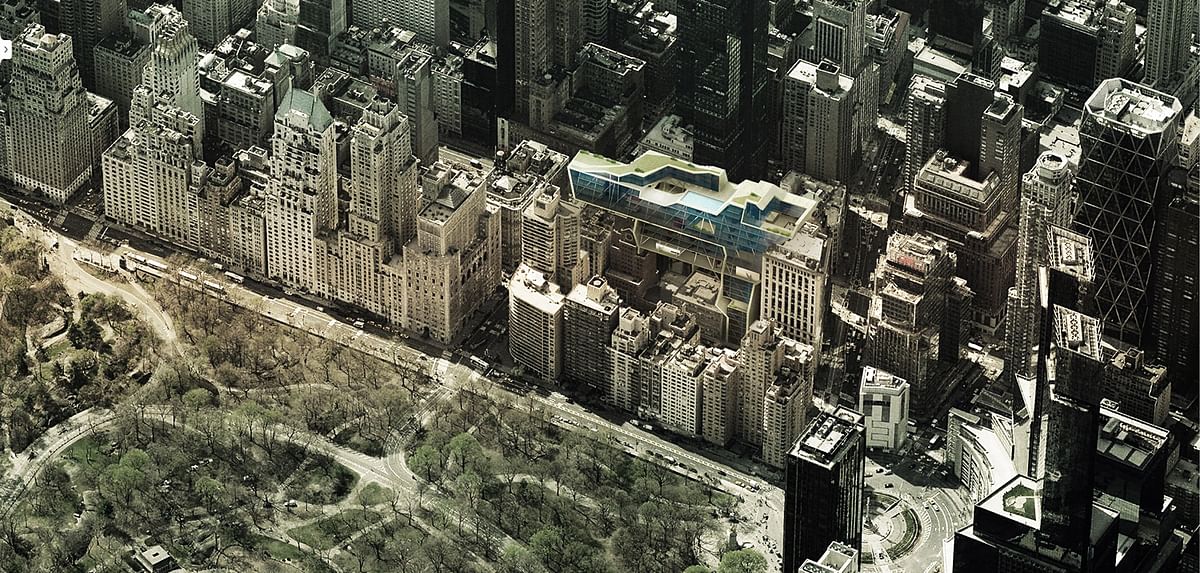
Related
Donghyun Kim, an architectural designer who graduated from Cornell University, recently won second place in the Residential category for RE-THINKING THE FUTURE's International Architectural Thesis Award. The Residential category recognizes the best residential projects that provides comfortable and attractive housing that are suitable and produce minimal impact for residents' respective environments. The category also seeks projects that redefine residential living spaces, whether through new technology or other inventive means.
Kim's "Micro Housing" proposal is a response to New York City's changing demographics of shrinking housholds and also the lack of ground-level residential housing space.
Check out some images below.
Project description:
"A. Problem Statement
New York City has had a housing crisis. In particular, there is a demonstrated need for so-called micro-housing — small units for single men and women. 76% of city population, approximately 1.8 milion, is comprised of one or two households. However, only 1 million studios or 1 bed-room apartments are currently provided. Additionally, New York City is almost already fully developed on the ground level. Given this, this project proposes how to fill the gap between supply and demand of micro housing, 0.8 million in the existing condition."
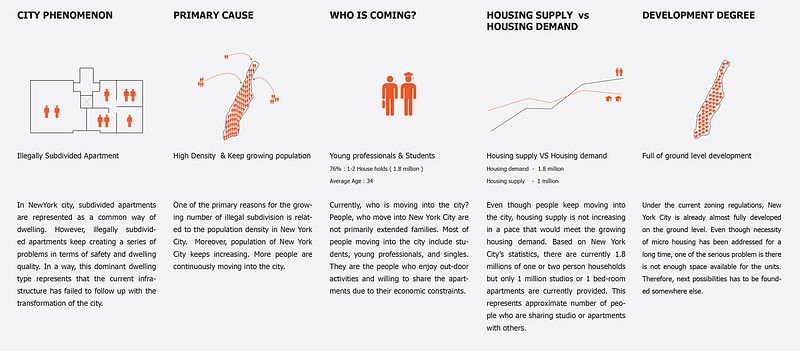
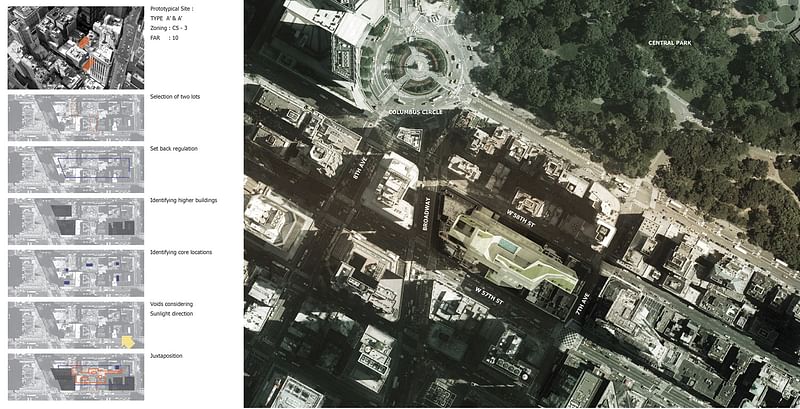
"B. Limits and Opportunities
New York City's zoning ordinance establishes a framework for regulating building mass, placing limits on development using these three primary tools, which together define a "zoning envelope":
1. Sky exposure planes
2. Maximum height limits
3. Maximum floor-area ratios (FAR)
In the meantime, the gap between zoning envelope and actual building would be where opportunity can be found."
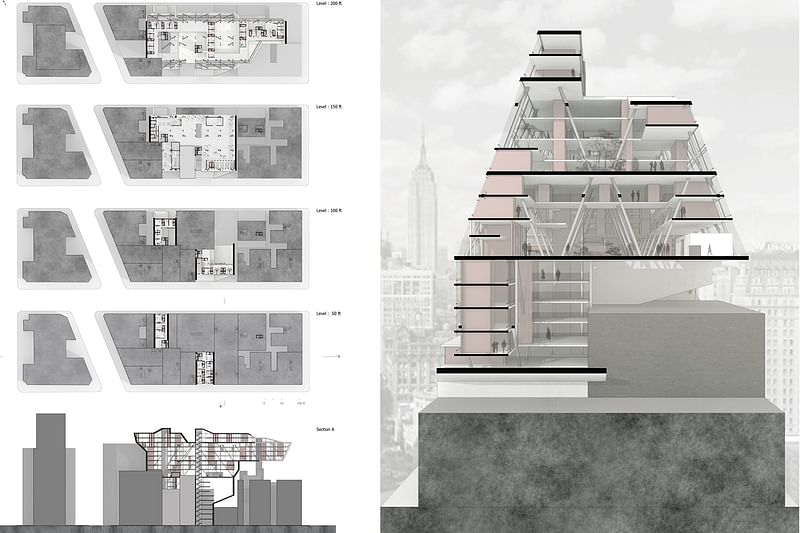
"C. Underlying assumptions and Strategies
1. To maintain the existing urban fabric, minimize demolition of viable infrastructure, and promote a higher and more sustainable density of development, this project builds above, between, and (in some strategic instances) within existing buildings.
2. It is assumed that contiguous properties within various blocks can be assembled (purchased) and developed in a comprehensive manner.
3. The project intends to exploit the formal, spatial, and functional potential of the zoning envelope: inparticular, the misalignments of sky exposure planes and floor area ratios creates the potential for organizingthe housing around open courtyard-like spaces, since the FAR is typically far more constraining then the maximum development potential looking only at the sky exposure planes and height limits.
4. This project is both opportunistic and site specific: the existing infrastructure is re-used and extended, where appropriate, for egress; new structural supports are inserted into the existing buildings; existing roofs are re-imagined as habitable outdoor spaces; and so on."

"D. Examination of site Typologies
In terms of strategies intervention, four typical sites are selected to explore different possibilities and conditions. Each type has different combination of lot types and different zoning regulations."
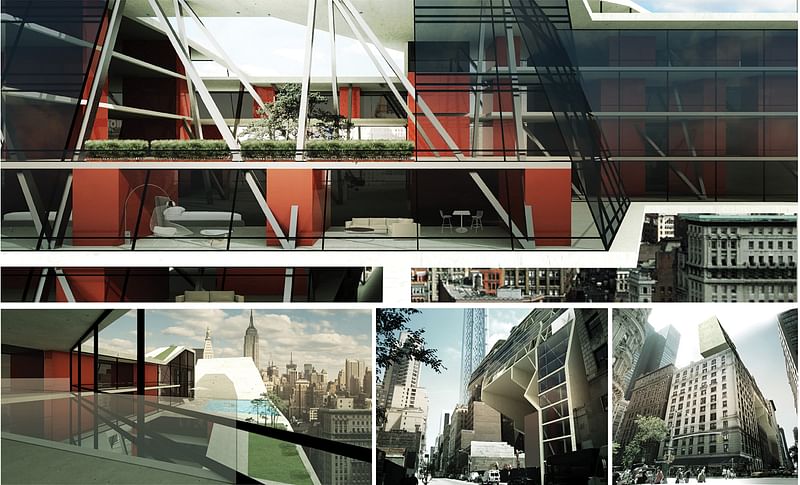
"E. Case study:
In order to explore more detailed possibilities and actual conditions, this case study reveals how the methodology can be implemented into the site taking into consideration all the limits and opportunities. The project utilizes less space at the lower level but it extends out at the upper level as it finds more space and possibilities. Also, the building mass will be shifted and punctuated to allow light and air in between each unit and out-door spaces."

"F. Further Possibilities
One project can potentially create approximately 300 additional units in one block. By considering the number of blocks of Manhattan, the methodology could be adopted in every two to three blocks and spread out at an urban scale to fill the gap between supply and demand of micro housing, 0.8 million."
Click here for more info.
All images courtesy of Donghyun Kim.

Share
0 Comments
Comment as :